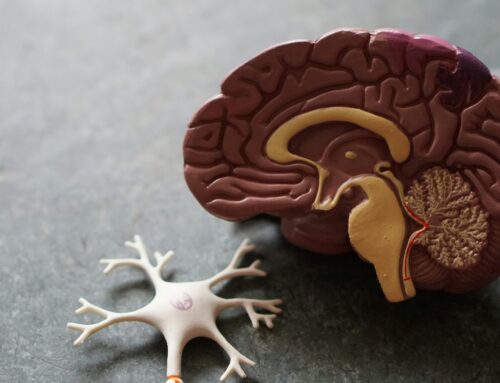Causes and Development
Tennis elbow, also known as lateral epicondylitis, is a painful condition caused by overloading the tendons attached to the outer elbow. It is often caused by repeated use of the forearm muscles responsible for extending and lifting the wrist. These repeated stresses can lead to microtears and inflammation in the tendons.
Although the term “tennis elbow” suggests that mainly tennis players are affected, the condition can also be caused by other activities that require repeated wrist and forearm movements. These activities include painting, screwing, typing, or lifting heavy objects.
Symptoms
The main symptoms of tennis elbow are:
- Pain and tenderness on the outside of the elbow
- Pain that can radiate from the elbow to the forearm and wrist
- Increased pain with certain movements, such as lifting or gripping objects
- Weakness in the forearm and wrist
- Stiffness in the elbow, especially in the morning
Epidemiological Distribution
Tennis elbow is a widespread condition and affects people regardless of their sporting background. Here are some important epidemiological facts:
- Frequency: Between 1 and 3% of the population are affected by tennis elbow each year.
- Gender: Men and women are affected equally, although some studies show a slight prevalence in middle-aged women.
- Occupational Load: People who perform repetitive wrist and forearm movements are at greater risk. These include professions such as carpenters, painters, office workers who type a lot, and people who regularly lift heavy objects.
- Athletes: In addition to tennis players, other athletes such as golfers, weightlifters, and players of racket sports are at risk.
Treatment Options
Conservative Therapy
- Rest and Protection: The affected hand and arm should be rested, and repeated stressful movements should be avoided.
- Cold Applications: Ice packs can help reduce pain and inflammation.
- Medication: Nonsteroidal anti-inflammatory drugs (NSAIDs) like ibuprofen or naproxen can relieve pain and reduce inflammation.
- Braces and Splints: These can help stabilize the affected area and reduce the load on the tendons.
- Physical Therapy
Consequences of Untreated Tennis Elbow
An untreated tennis elbow can lead to a number of complications and long-term consequences:
- Chronic Pain: Without adequate treatment, the pain can become chronic, significantly affecting the quality of life.
- Restricted Mobility: Persistent pain and inflammation can lead to a permanent restriction of mobility in the elbow and forearm.
- Muscle Atrophy: Continued protective posture and avoidance of movements can lead to muscle atrophy and weakness in the affected arm.
- Tendon Damage: Repeated stresses and inflammation can cause permanent damage to the tendons, making healing difficult.
- Overloading the Other Arm: Since the affected arm is used less, the other arm can be overloaded, which can lead to similar problems on the opposite side.
Physical Therapy
Physical therapy plays a crucial role in treating tennis elbow. It aims to relieve pain, improve mobility, and strengthen the muscles to prevent future injuries.
- Manual Therapy: Mobilization techniques and massages to relax the muscles and improve blood flow.
- Stretching Exercises: These help improve the flexibility of the forearm muscles and avoid shortening.
- Strengthening Exercises: Targeted exercises to strengthen the forearm muscles and improve tendon stability.
- Ultrasound Therapy: Can contribute to pain relief and accelerated healing.
- Shock Wave Therapy: High-energy sound waves stimulate the healing of chronically inflamed tendon tissue.
- Electrotherapy: Can contribute to pain relief and improved muscle activity.
Exercises for Tennis Elbow
Here are some specific exercises that can be helpful for tennis elbow:
- Wrist Stretch (Flexion): Hold the affected arm straight in front of you. Bend the wrist downward so that the palm faces down. With the other hand, gently pull the affected hand further down until a stretch is felt in the forearm. Hold the stretch for 15–30 seconds and repeat 3 times.
- Wrist Stretch (Extension): Hold the affected arm straight in front of you. Bend the wrist upward so that the palm faces up. With the other hand, gently pull the affected hand further up until a stretch is felt in the forearm. Hold the stretch for 15–30 seconds and repeat 3 times.
Exercises against resistance:
- Wrist Flexion Against Resistance: Sit at a table and place the forearm with the palm facing up on the table edge. Hold a light weight (e.g., a dumbbell or a water bottle) in your hand. Bend the wrist upward and slowly lower it back down. Perform 3 sets of 10–15 repetitions.
- Wrist Extension Against Resistance: Sit at a table and place the forearm with the palm facing down on the table edge. Hold a light weight in your hand. Lift the wrist upward and slowly lower it back down. Perform 3 sets of 10–15 repetitions.
- Pronation and Supination: Hold a small hammer or a similar object in your hand, with the forearm resting on the table and the hand over the edge. Rotate the forearm so that the palm faces down (pronation), and then so that the palm faces up (supination). Perform 3 sets of 10–15 repetitions.
- Finger Extension with Rubber Band: Place a rubber band around all five fingers and extend the fingers against the resistance of the rubber band. Hold the tension for a few seconds and then release. Perform 3 sets of 10–15 repetitions.
Conclusion
Tennis elbow is a painful and often prolonged condition caused by overuse of the forearm muscles. A combination of rest, medication, and targeted physical therapy can help relieve symptoms and support healing. Regular exercises to stretch and strengthen the affected muscles are essential to restore arm function and prevent future problems. If untreated, tennis elbow can lead to chronic pain and loss of function, so early and comprehensive therapy is recommended.







Leave A Comment